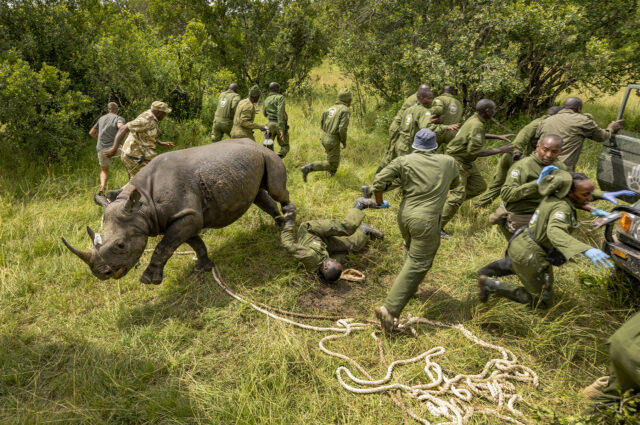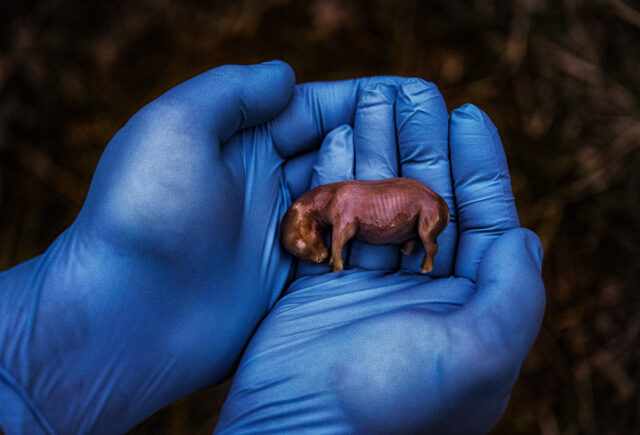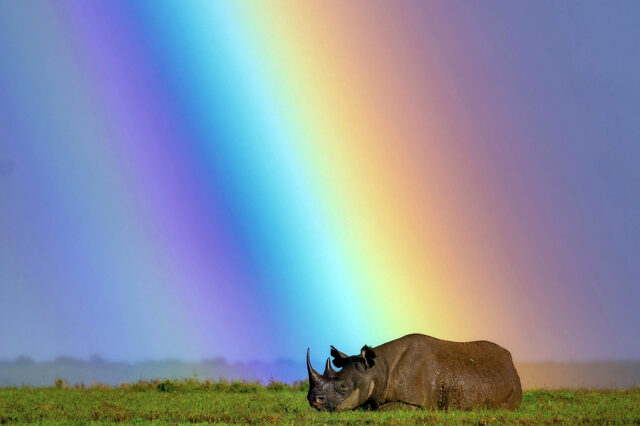Black Rhino Revival
I am honored to have been able to collaborate with The Nature Conservancy to document the incredible efforts and critical steps Kenya has had in achieving stable habitats for the survival of the species.
Black rhinos once thrived across Kenya, but rampant poaching in the 1970s and ’80s drove them to near extinction. However, government interventions over the past 30 years have reversed this trend. In January 2024, 21 critically endangered black rhinos were translocated to Loisaba Conservancy in northern Kenya due to overcrowding at Kenya’s 16 black rhino sanctuaries—a remarkable turnaround from the days when the population plummeted from 20,000 to fewer than 300. Now, Kenya is halfway to its goal of reaching 2,000 individuals, the minimum required for long-term species survival.
The complex translocation process demanded meticulous planning and collaboration. Moving such massive animals as rhinos is both dangerous and challenging, given the stress, trauma, and potential injuries faced during transportation. Furthermore, handlers must manage these powerful creatures safely, even under sedation. The logistical complexities called for precise coordination and the expertise of veterinarians and wildlife specialists. Despite challenges, the teams worked together over three weeks to successfully relocate all the rhinos.
In this image, the Kenya Wildlife Service team quickly springs into action to save a rhino’s life after it stopped breathing at Ol Pejeta Conservancy in Laikipia, January 20, 2024. (KWS) successfully translocated 21 eastern black rhinos to Loisaba conservancy, which hasn’t seen rhinos for 50 years due to poaching. The operation not only underscores Kenya’s conservation triumph but also signifies a critical step in achieving stable habitats for the survival of the species.
Loading Images




